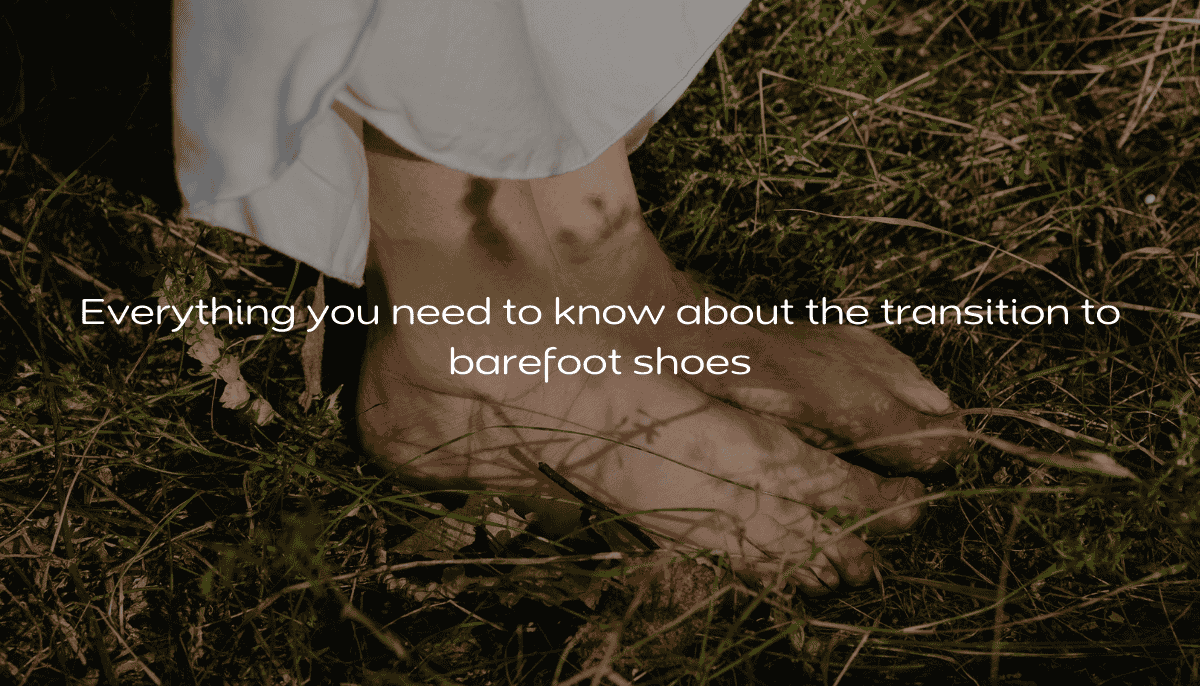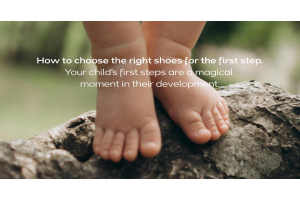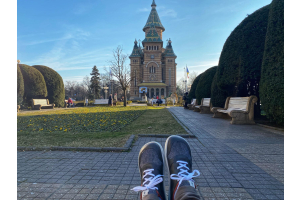Everything You Need to Know About the Transition to Barefoot Shoes

Have you heard about the benefits of barefoot shoes and are thinking about making the switch? Maybe you already have a pair in your closet, or perhaps you’re planning to buy your very first pair. No matter where you are in the process, this guide will show you exactly how to transition safely and effectively.
You’ll discover why barefoot shoes can transform the way you walk and feel, how to prepare your feet for this change, the concrete steps for a successful transition, and what mistakes to avoid along the way. You’ll also learn how to help children make this change and how to recognize when you’re ready to wear only minimalist footwear.
Why Choose Barefoot Shoes?
Let’s be honest for a moment. When you first hear “barefoot shoes,” your reaction is usually one of two things: you either love the idea immediately, or you think it’s crazy. Both reactions are understandable.
Know that this isn’t a passing trend. We’re talking about an entire movement system that the human body has perfected over millions of years of evolution. Until a few hundred years ago, humans walked barefoot or with minimal protection on their feet.
Here’s what happens when you make the switch:
- Posture changes almost automatically - Without artificial heels and without being “pushed” forward, the body naturally finds balance. Many people notice that chronic back pain disappears after a few months.
- Feet become stronger than you ever imagined - Those small muscles in the feet that remain inactive in traditional shoes start working again. It’s like freeing a hand that’s been in a cast for months.
- Balance improves noticeably - When the feet directly sense the ground, the brain receives real-time information.
- Knee and hip pain can disappear - It may sound strange, but many pains are caused by the way you step. A 2023 study showed that people who transitioned to barefoot shoes reported a 40% reduction in lower-body pain after six months.
- Walking becomes more efficient - Instead of putting pressure on the heel with every step, which creates shock waves through the body, you learn to land on the front part of the foot.
- Blood circulation improves - Simply put, without constriction, blood flows better.
- You feel more connected to the environment - It may sound odd, but it’s real. Feeling the texture of the ground, temperature, and moisture helps your body “know” better where it is.
How to Prepare Your Feet Before the Transition
Your feet have been on “vacation” for years. They’ve been nurtured, sheltered, protected, and… weakened. It’s like lying in bed for three months and then wanting to run a marathon.
Preparation is essential. Without it, you risk plantar fasciitis or Achilles tendinitis, and you may end up saying “barefoot isn’t for me.”
Here’s how to prepare your feet:
- Play with your toes - Yes, it sounds childish. Most adults can’t move their toes independently anymore. Try lifting only your big toe while keeping the others on the ground. Then try lifting the others while keeping the big toe down.
- Short-foot exercise - While seated, try to lift your foot’s arch without curling the toes. It’s like making the foot “shorter.” Hold for 5–10 seconds. These muscles probably haven’t worked in years.
- Walk barefoot at home - Start with 30 minutes daily on wood, tile, or carpet. Notice how each surface feels. Your soles will be sensitive at first, which is normal.
- Tennis ball massage - Roll a tennis ball under your foot for a few minutes each day, focusing on tight areas. If it hurts, it’s a sign that it was needed.
- Single-leg balance - Seems simple? Try standing for 30 seconds without wobbling. Then try with eyes closed.
- Calf raises - For strong calves. Without strong calves, barefoot walking becomes torture. Do 3 sets of 15 reps daily.
Don’t rush this stage. Your body has forgotten how to use your feet naturally. Remind it patiently. Two to three weeks of preparation can save months of pain later.
The Process of Transitioning to Minimalist Footwear
Now we reach the moment of truth. You have the shoes, your feet are prepared, it’s time to start. But don’t think it will be like the miraculous transformations in movies. Transitioning takes time, and that’s a good thing.
First Month: Getting to Know the Shoes
Start with 30-60 minutes a day. No more. Even if you feel great (and you probably will, because the sensation is liberating at first).
Choose friendly surfaces: wood floors, smooth asphalt, short grass. Avoid gravel and very rough surfaces. This is not the time for heroics.
After the first week, if everything goes well, you can increase by 15-30 minutes. Listen to your body. Persistent pain in the Achilles tendon or the back of the calf means you need more time.
Months Two and Three: Building Strength
Now you start diversifying. Different surfaces, longer distances, maybe even light physical activities in your barefoot shoes.
Your body begins to learn a new walking rhythm. Instead of “attacking” the ground with the heel, you begin to land more on the front part of the foot. It’s a major change in the kinetic chain of the entire body.
Many people report noticing changes in posture and how they feel when walking in traditional shoes. Suddenly, that 2-3 cm thick sole feels… strange.
Month Four and Beyond: Mastery
Now things start getting really interesting. You can begin including more intense activities: short-distance jogging, functional exercises, sports if you practice them.
Be careful with very hard or rough surfaces for long periods. Even after months of transition, certain conditions can be challenging.
A good indicator you’re on the right track: you no longer constantly think about your feet when wearing barefoot shoes. Movement becomes natural and automatic.
What not to do? Don’t become extreme and throw away all traditional shoes. For certain professional situations, extreme weather, or specific activities, traditional footwear still has its usefulness.
Transitioning to Barefoot Shoes for Children
Transitioning children to barefoot shoes is a completely different story, and a much more beautiful one than for adults.
Young children (under 6 years)
They are the luckiest. Their feet are still flexible, soft, and adaptable. They haven’t yet developed dependence on artificial support.
Let them walk barefoot as much as possible indoors, on grass, on sand, and on varied safe surfaces. Their feet learn balance, texture, and temperature in real time.
Older children (6–12 years)
They may need more explanation. Make it an adventure, not a rule. “Let’s see how strong our feet can get!”
Involve them in choosing their shoes. There are very nice models for kids that don’t look “weird” or “medical.”
Monitor for signs of discomfort. Children do not always clearly communicate when something bothers them.
Teenagers
It may be more complicated due to social pressure. Teens want to fit in, not stand out.
Luckily, barefoot shoe design has evolved enormously. There are models that look completely normal, even modern.
Explain the long-term benefits. For a teenager, the idea of better posture or stronger feet can be convincing.
Many professional athletes use barefoot shoes in training. That may be a stronger argument for a teenager than health benefits alone
Common Mistakes to Avoid
Here are the biggest pitfalls people fall into. Knowing the traps makes it easier to avoid them.
- Rushing - This is the biggest mistake. Enthusiasm for starting barefoot shoes is great, but your feet understand only gradual adaptation. Some people start with 4-5 hours of barefoot walking on day one. After a week, they have plantar fasciitis and say “barefoot is stupid.” It’s not stupid, they just forced the process.
- Ignoring pain signals - There is a clear difference between adaptation discomfort and pain signaling a problem. Discomfort is like mild muscle fatigue after exercise. Pain is sharp, persistent, and worsening. If your Achilles tendon hurts constantly, stop.
- Choosing the wrong shoes for beginners - Not all barefoot shoes are suitable. At first, don’t choose the thinnest sole. Start with something that offers a bit of protection and gradually move to thinner soles.
- Neglecting foot preparation - Many people buy barefoot shoes and think that’s all. Feet weakened by years of artificial “protection” need specific training. Exercises are not optional.
- Giving up too early due to discomfort - The first few weeks can be challenging. Your body adapts, your senses recalibrate, and your muscles wake up. It’s normal to feel chaos, but many give up in the first 2-3 weeks.
- Extremism - On the opposite end is fanaticism. “From now on, I will only ever wear barefoot shoes!” This may not be the most practical approach in real life. Barefoot shoes are excellent, but not the only solution for everything.
One final tip: find someone who has successfully gone through this process. Their experience can save you many attempts and errors.
Signs You’re Ready to Wear Only Barefoot Shoes
The question everyone asks at some point: “Am I ready for the final step?”
There’s no simple answer. Every body is different, lifestyles are different, and needs are different. But there are some clear signals:
- Comfort on varied surfaces - You feel comfortable walking on asphalt, fine gravel, grass, and other common surfaces without significant pain or discomfort. Soles have developed necessary resistance.
- Improved stability - Balance on one foot is stable for at least 60 seconds with eyes open and 30 seconds with eyes closed, indicating proper proprioception.
- Adequate foot strength - You can do 20 consecutive calf raises without pain or excessive trembling. The foot arch maintains naturally without conscious effort.
- Natural, efficient walking - Your walking adapts naturally to forefoot landing, and your pace is fluid and comfortable over at least 2-3 kilometers.
- Absence of pain or inflammation - No longer experiencing Achilles, plantar fascia, or other previously problematic pain.
- Mental and emotional indicators - You feel confident and enthusiastic wearing barefoot shoes and prefer them over traditional shoes in most situations.
- Daily wear for a full week - You can wear barefoot shoes for all daily activities including work, shopping, moderate exercise, and routine tasks without significant discomfort.
If you meet all these criteria, you’re ready for full transition. Still, it’s wise to keep a pair of traditional shoes for special situations.
How Lang.S Barefoot Can Help You Have an Easy Transition to Minimalist Footwear
Transitioning to barefoot shoes can seem challenging, but with the right partners and products, this journey becomes not only easier but also more enjoyable. Lang.S Barefoot understands the specific challenges you face during this transition and has developed concrete solutions to support you at every stage.
Lang.S Barefoot offers specially designed shoes for gradual transition. Unlike many brands that offer only ultra-minimalist options, the Lang.S range includes models with different sole thicknesses, allowing you to start with more protective versions and gradually move to thinner, more minimalist models as your feet adapt.
The quality of the materials used ensures the durability needed for long months of transition, and the modern design helps you feel confident in any social or professional context. Each model is tested to provide the perfect balance between protection and sensory feedback.
Investing in barefoot shoes is not just a purchase. It is a partnership for the long-term health of your feet. Transitioning to natural movement doesn’t have to be a solitary struggle. With the right support, it becomes a fascinating journey toward rediscovering your body.
 EN
EN RO
RO 




